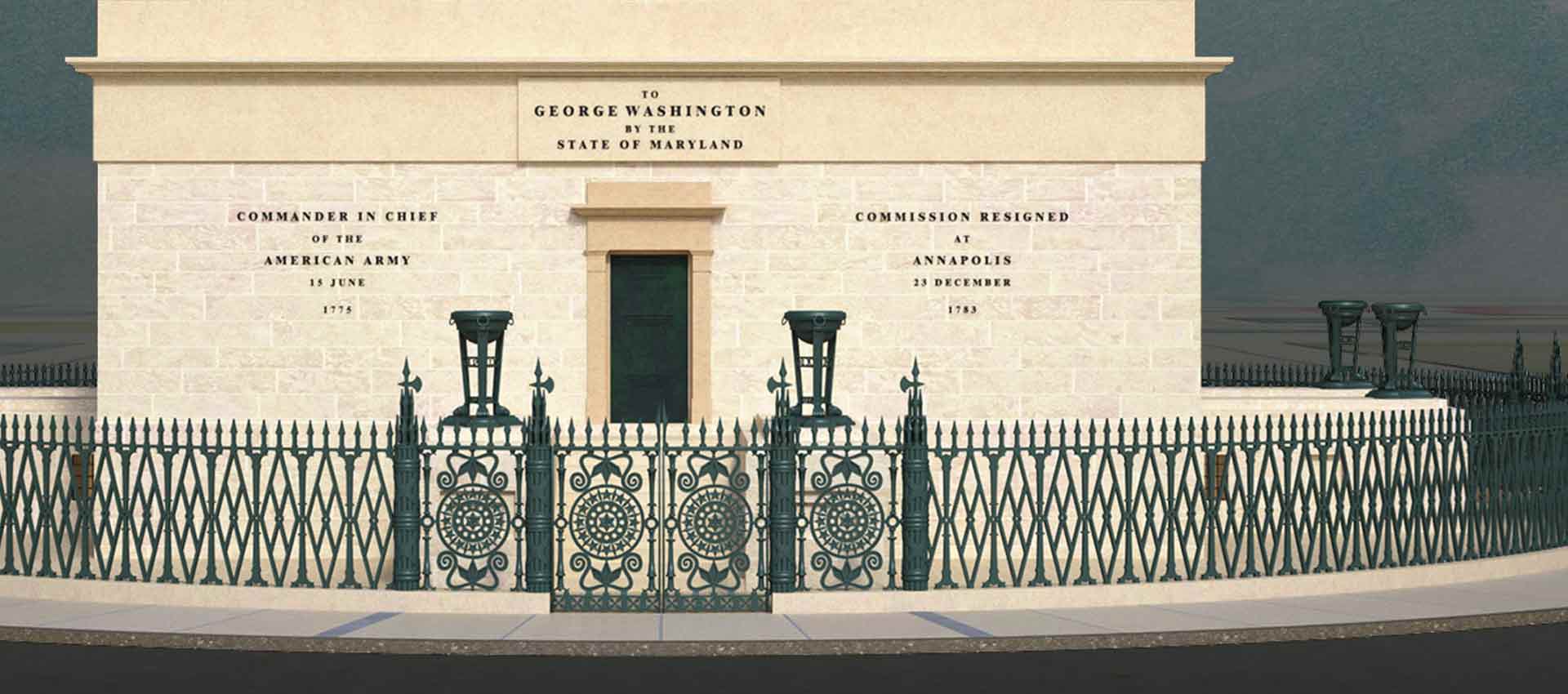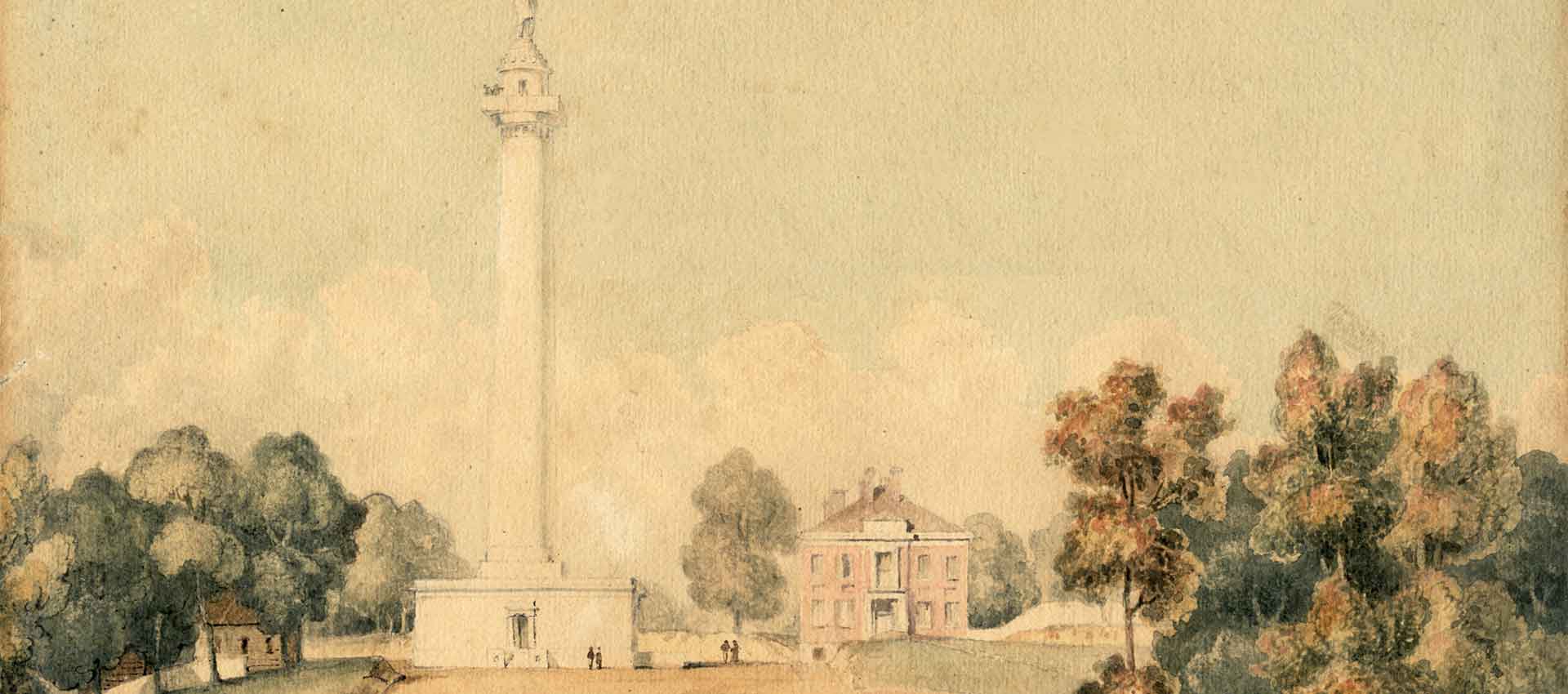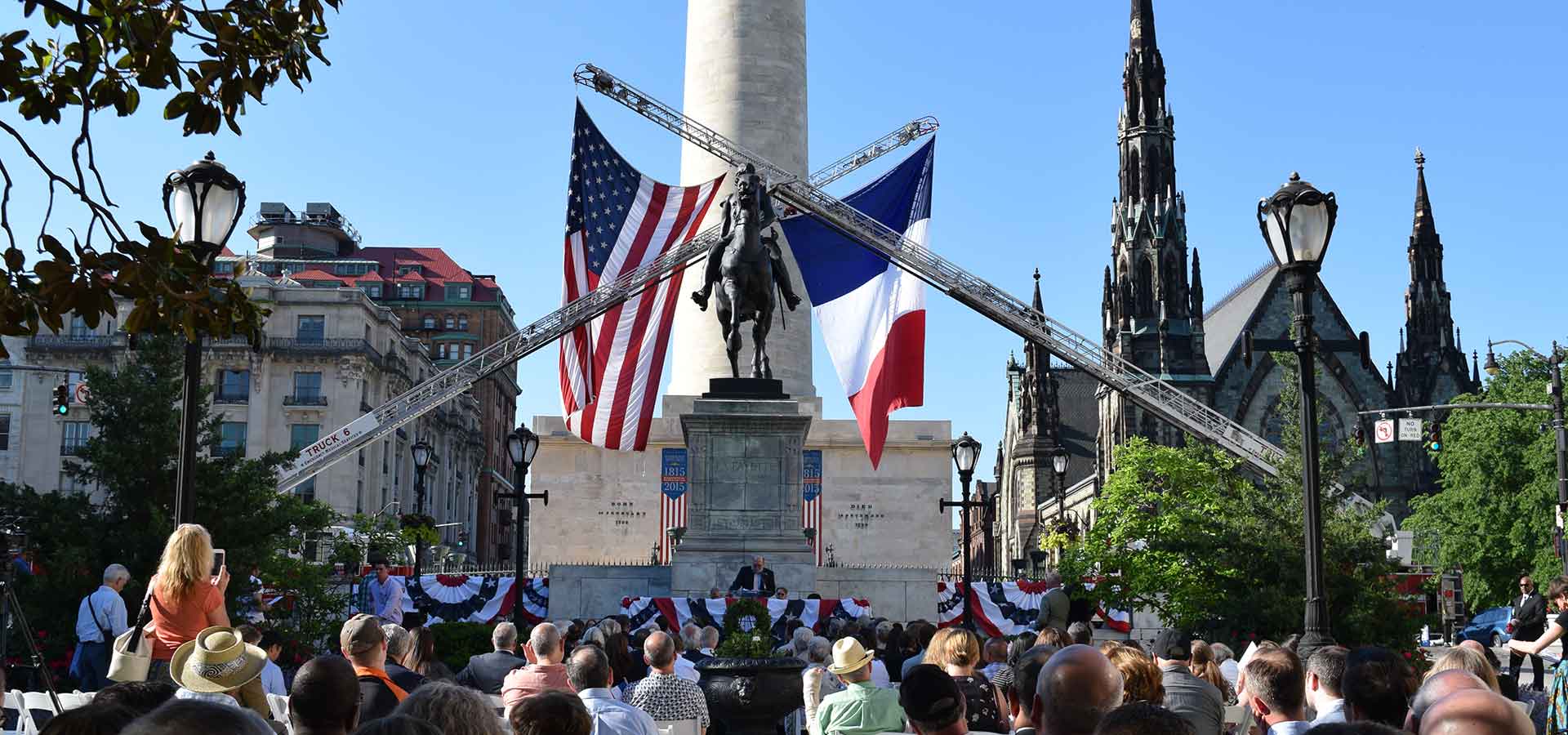Baltimore and the City Beautiful: Carrère & Hastings Reshapes an American City.
Mount Vernon Place has a long and distinguished landscape design history, one prompted by its magnificent centerpiece Robert Mills’ Washington Monument, which set a high bar for the development of the surrounding grounds. Over time, in addition to Mills’ contributions, the park spaces were also designed by Frederick Law Olmsted, Sr., whose firm transformed the North and South Squares in the 1870s.
A convergence of World War I patriotism and turn-of-the-century City Beautiful aspirations transformed the squares in 1917, when the firm of Carrère & Hastings was brought into Baltimore to continue earlier work they had been involved with in the city. Mount Vernon Place was only one of the public spaces the firm transformed during this campaign—a project spurred on by a wish to add a statue of the Marquis de Lafayette to the setting as a show of support to the French fighting for their national liberty during the first World War. Lafayette’s contribution to American independence had long been acknowledged. The new work reunited Lafayette and Washington in a landscape setting—one which required a new vision for the squares that brought them into harmony with the classical marble design of the Washington Monument.
More History
The Monument is meant to be experienced not only from the outside, but from the inside. Architect Robert Mills designed the structure
When America’s first President George Washington died in 1799, the new United States of America went into mourning. His generation had accomplished
While the Monument was being built, notices of its construction and completion were often placed in the newspaper to inform the public
Baltimore and the City Beautiful: Carrère & Hastings Reshapes an American City. Mount Vernon Place has a long and distinguished landscape design
What’s in a Name? Baltimore—”The Monumental City.” For over two hundred years Baltimore has been called “The Monumental City.” Since the 1970s





